8 lost classics of the ’80s, all under $18,000
The 1980s was an odd time in the automotive world: It was a chance-taking era, with multiple entries that really made no sense then, perhaps even less sense now. Automakers and importers tried some things that simply didn’t work, and the failure wasn’t always the car’s fault. Here we present eight cars from the ’80s that could have made a major impact but, for one reason or another, did not.
All the cars are priced at under $18,000, and some quite a bit under that figure. All prices are based on Hagerty’s valuation of a #3, “Good” condition car—better than the average driver, but not a show winner. In other words, nicer-than-normal cars that could make for some interesting transportation.
The model year given is the first year the car was imported to the U.S., but not necessarily the first year it was made. Regardless, our value represents the entire model run of the car, even those that lasted into the 1990s. Here goes . . .
1983 TVR Tasmin 280i — $9100

British car builder TVR has long built some interesting, fun, and usually odd-looking sports cars such as the ovoid TVR Vixen 2500, but the cars got little traction in the U.S. That was supposed to change with the TVR Tasmin 280i convertible, a wedge-shaped, hand-built two-seater designed along the lines of the Triumph TR7 and Subaru XT that was first imported in 1983.
Running gear was a hodgepodge of bits and pieces from an astounding number of other cars—reportedly the ashtray in some later models actually came from the DeLorean DMC-12. The engine was the 2.8-liter Ford Cologne V-6; it was not a selling point to tell buyers the sports car’s engine was fresh from the early Ford Ranger and Bronco II. Transmission was a four-speed manual. Still, the 280i was fun to drive and undeniably distinctive, and many parts are still available—except, perhaps, for the ashtray.
1985 Bitter SC — $15,900
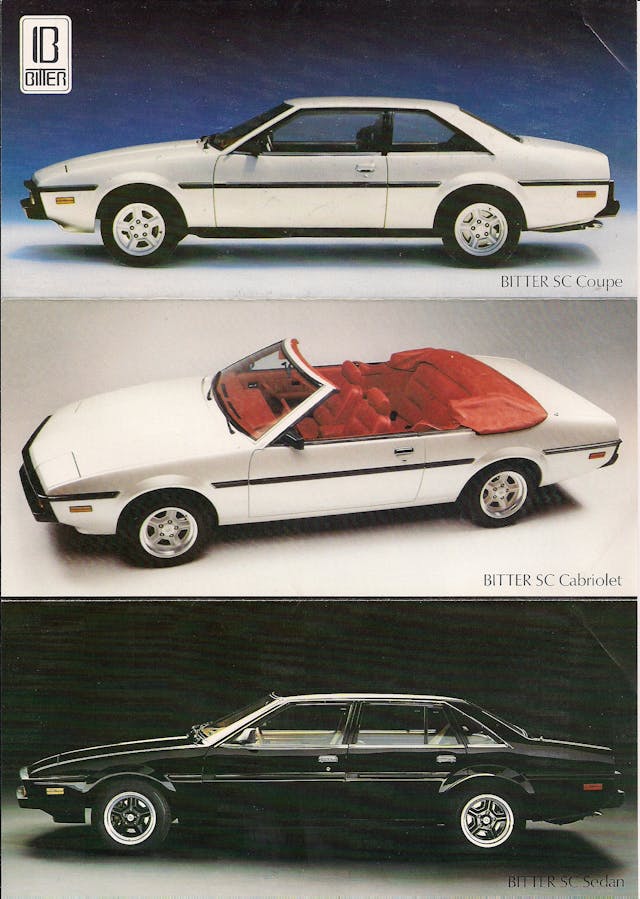
Erich Bitter, who died in July at age 89, was a professional race car driver turned car executive. He pieced together new models largely out of existing models, and his big push came in the 1980s with the Opel Senator–based Bitter SC. The car actually made it to America after the existing coupe was introduced at the 1984 New York auto show.
The Italian body of the SC looked a bit like a period Jaguar XJ-S and Ferrari 400i and was aimed at the Jaguar and comparable Mercedes-Benz and BMW models. Power was from an inline, fuel-injected Opel six-cylinder with either 177 or 207 horsepower, with a manual or automatic gearbox. General Motors tried to place the Bitter in Buick dealerships, but Buick salespeople had no idea what to do with the car. Sales were miserable. Regardless, the Bitter, when new, had an undeniably European luxury-car feel that made for a very pleasant tourer. No reason it still wouldn’t.
1989 Laforza — $9500
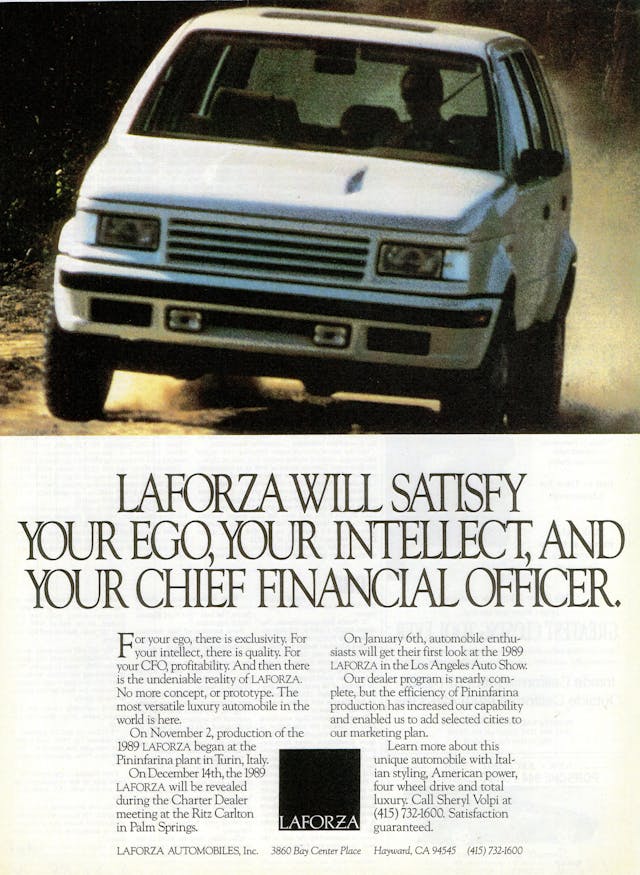
The Laforza was a big, heavy four-wheel-drive SUV that was supposed to take on Range Rover, but it lacked the moxie. It was powered by a fuel-injected 5.0-liter V-8 from Ford with an automatic transmission and a Chrysler transfer case. My overriding recollection of my Laforza drive was some of the worst brakes I’ve experienced in any vehicle, but it could have just been my tester (though it had rear drum brakes and no ABS).
The car began life in Italy as the Rayton-Fissore Magnum, first shown in 1984. The Laforza was built in Italy, with some U.S.-specific parts added by an aftermarket company in Michigan. Rather ungainly-looking outside, the interior was quite nice and had premium appointments. As with so many foreign startups, distribution was a fatal issue for the pricey Laforza. Only 1200 came to the U.S., so they are rare, but one shows up periodically online.
1989 Chrysler Maserati TC — $8500
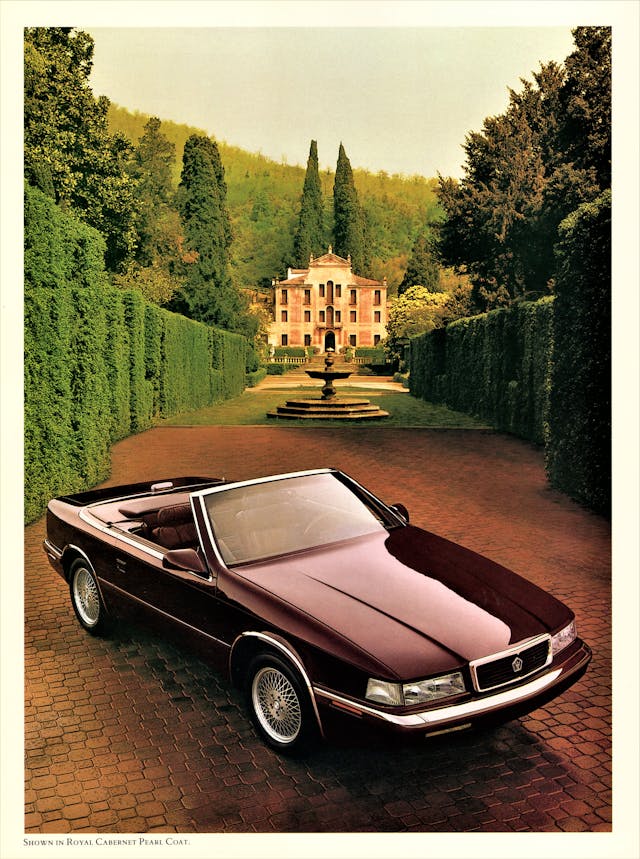
Former Ford executive Lee Iacocca was nothing if not ambitious by the time he took over Chrysler, and one of the things he coveted was a luxury gentlemen’s sports car. And he wanted it fast. The reason the car looks so much like a shortened Chrysler LeBaron coupe is that Iacocca loved the LeBaron; harried designers took the path of least resistance and basically copied the LeBaron, down to some parts and pieces. At least, that’s the story I was told then by a Chrysler executive.
Finally introduced at the 1986 Los Angeles auto show, the Chrysler Maserati TC didn’t show up until late 1988 as an uneasy collaboration between Chrysler and Maserati. The production delays were a standing joke among automotive journalists of the day. The powertrain was a turbocharged 2.2-liter four-cylinder, eventually replaced by a Mitsubishi 3.0-liter V-6. About 500 were made with a manual transmission and a 16-valve Cosworth/Maserati head: These are rare but a lot of fun to drive. Even today, the TC is not an unattractive car, and could be a nice oddball for Sunday drives.
1987 Cadillac Allanté — $8186

Undoubtedly the most outrageous grandstand play of the 1980s was the Cadillac Allanté. No expense was spared, especially with the bodies, which were made by Pininfarina in Italy and flown to Michigan 56 units at a time on specially equipped Boeing 747s. The car was remarkably expensive at about $57,000, or $150,000 in today’s money, though it is now the cheapest car in this list. The only option was a console-mounted cellular telephone.
The Allanté was exclusive, but not necessarily by GM’s choice, with only about 21,500 produced in seven model years. The two-seater shared some parts and a basic platform with the Cadillac Eldorado, and the powertrain was a slightly modified 4.1-liter Cadillac V-8 with an automatic transmission. In 1993, the Allanté got the more powerful 4.6-liter Northstar V-8 (below), but by then, its fate was sealed.
The Allanté was not really a failure: It drove, then and now, like the elegant roadster it was designed to be. But the massive depreciation tells the story—it was too expensive, too complex, too ambitious.
1989 Lotus Elan M100 — $13,100
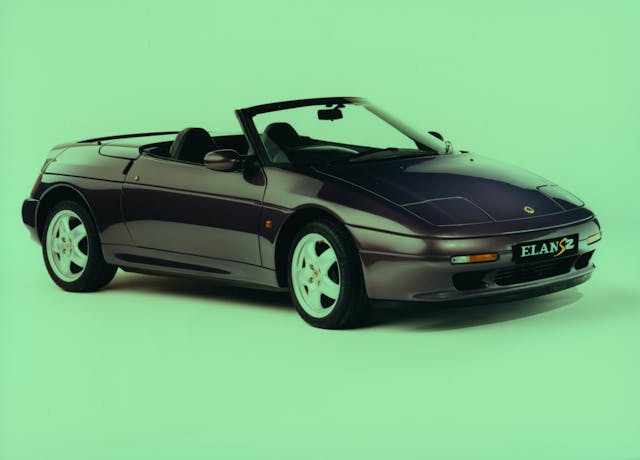
There was an interesting partnership between Isuzu and Lotus in the 1980s: Lotus engineered the suspension, quite effectively, for the little Isuzu I-Mark and the sporty two-door Impulse. Isuzu customers were impressed by Lotus, but Lotus customers not as much by Isuzu. Nearly 15 years after the last Elan—some would say the last real Elan—was sold, this Elan was front-wheel-drive and powered by a turbocharged 1.6-liter four-cylinder built by Isuzu but lightly modified by Lotus. The manual transmission was also by Isuzu.
Not surprisingly, Lotus loyalists were not amused, though the engine and transmission worked well. Many reacted as if International Harvester built the powertrain. The Elan’s styling wasn’t bad, but it arguably looked too much like the unloved Mercury Capri. To make matters worse, the Elan was introduced at about the same time as the Mazda Miata, and the market could absorb just so many small sports cars. This Elan had a lot going for it, but only 560 made it to the U.S.
1985 Merkur XR4ti — $9400

Ford had a roster of semi-sporty cars in Europe, and executives saw no reason why they wouldn’t work here. So they sent over the Merkur XR4ti which was supposed to take on the BMW 3 Series, and the Scorpio, targeted at the 5 Series. Both missed the target.
Ford’s Bob Lutz, fresh from a stint in Europe, was a fan of the European Ford Sierra, and reasoned that a version would do well in the U.S. It had a turbocharged, injected (hence the “ti”) 2.3-liter four-cylinder, essentially the same engine used in the Ford Mustang Turbo GT and Thunderbird Turbo Coupe. The hot ticket with the XR4ti was the five-speed manual-transmission cars because they had 175 horsepower, compared to a soggy 145 for automatics. Some of those three-speed automatics actually ended up in rental fleets.
The cars were continually upgraded but by 1989, Lutz’s European experiment was over, one reason being that few buyers looked to Mercury dealers for a BMW alternative. (The larger, four-door Scorpio lasted only two model years, 1988–89.) The XR4ti was a fun car while it lasted.
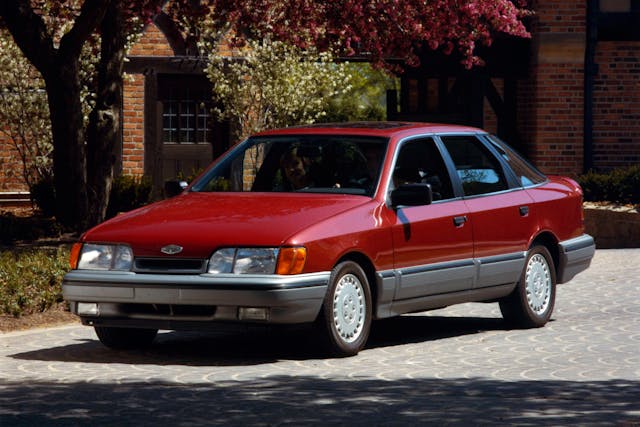
1983 Bertone X1/9 — $17,900
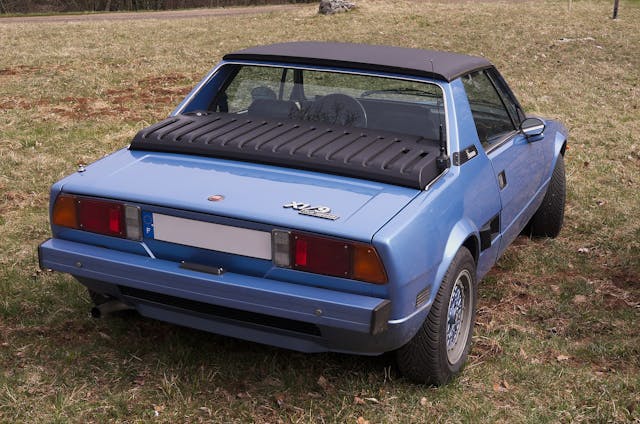
Malcolm Bricklin, the Orlando hardware store chain owner, wanted to be an automotive magnate, and he started by engineering the first importation of Subaru. From then he went on to build his own sports car, the interesting Bricklin SV-1, and to import the Yugo, a small car from Yugoslavia. It cost $3995 and was not quite worth the money. Then he set his sights on the Fiat X1/9, a midengined sports car that was a modest success in the states until Fiat quit importing it in 1982.
Bricklin arranged for the car to continue sales in the U.S. under the aegis of International Automobile Importers, dropping the name Fiat and calling it a Bertone; after all, Bertone now built it. IAI imported the X1/9 until 1987, and then for two more years, an X1/9 dealer in California imported some himself. The mid-engine sports car was arguably ahead of its time, and its long 15-year history in the U.S. meant aftermarket parts were available. The 1983 model had a 1.5-liter, fuel-injected four-cylinder and a five-speed transmission; it wasn’t fast, but handling was so good you’d think otherwise. More than 100,000 were imported to the U.S., but the little car is all but forgotten today.
***
Check out the Hagerty Media homepage so you don’t miss a single story, or better yet, bookmark it. To get our best stories delivered right to your inbox, subscribe to our newsletters.


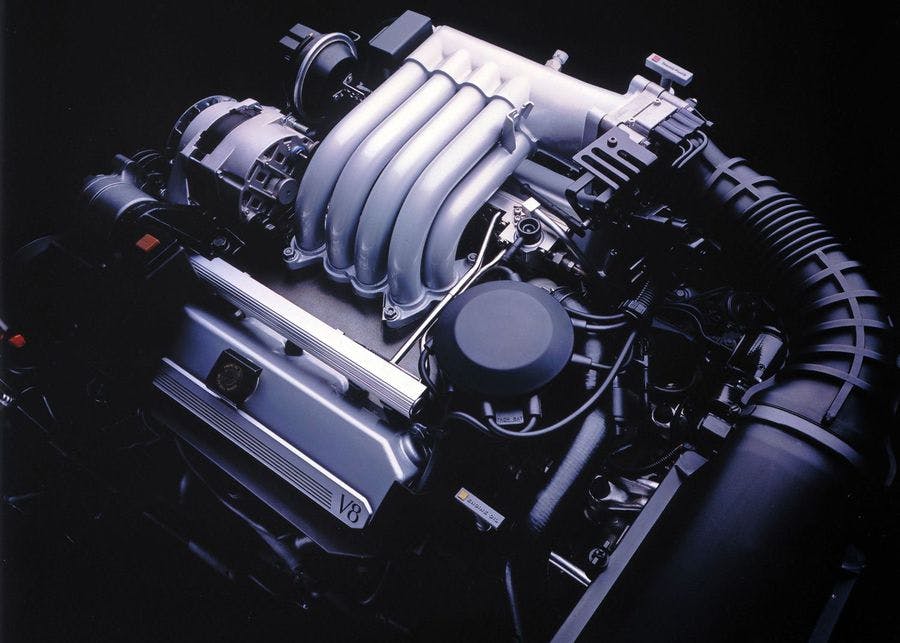


There is a reason they are so cheap. Try to get parts for them. Most are difficult if not impossible. Even if you find them they will cost you much.
Also the FWD nature of several just make for bad sports cars.
These are great cars if you want to be different or visit Rad Wood events but keep in mind buy the best one you can find as restoring one will cost more than it is worth.
These stories always promote these models but leave out the And the rest of the story part.
The Allante is an interesting mix of standard GM parts bin and costalotium-plated unobtainium components. Pretty much any of the commonly replaced parts are common. body components are next to impossible to find. The one unobtainium component that may find mine becoming a RWD conversion project one day is the Allante-only F7 transmission. It has the appearance of the transaxles of the day, but it was beefed up for the higher output of the Allante-spec’d engines, and 3rd and 4th gear shifting was computer controlled using shift solenoids.
You beat me to the punch. Finding parts for these cars is like finding the proverbial “needle in a haystack.” They call them “orphan” cars for a reason.
I’ve own two Allantes (and one XLR). Several websites advertise parts, advice,and expertise, so you’re NOT alone if you purchase one. Best be handy , a shade tree mechanic and patient as some minor age related challenges can be frustrating. We love our ’88
Sorry, but not a fan of foreign wannabe sport cars. Like all cars there are enthusiasts for these as well. I suppose my garage will have to wait another day.
Yeah, the M100 Elan is such a wannabe sports car. Being one of the fastest point-to-point back road cars ever made doesn’t make it a sports car, right?
No one knows wtf u r taking about. Even Google.
It’s called sarcasm.
Funny. I used Google and found this: ‘… on release the [M100] Elan was described by Autocar magazine as “the quickest point to point car available”‘.
It was driven by the front wheels and used an under powered Isuzu engine.
This car was done during the GM years and just was never popular. Unless you find one at the right price and condition you easily can put more in it than it is worth,
You can more money than it’s worth into anything. These cars just make it really easy. I earned my first ASE certifications in the late 80’s, and worked on everything. It was a terrible decade for everything automotive by every manufacturer. Emissions mandates, computerized experiments, cost cutting, and generally low quality products across the board. The exceptions were Honda, Toyota, Isuzu, and Mazda. See a trend? The Japanese were WAY ahead of everyone designing engine management systems and sturdy plastics, which was (and still is) fundamental to building reliable affordable vehicles.
The normally aspirated M100 (not sold in the US) was underpowered. The turbo version was 160-odd bhp in 2400 lbs. Not crazy but not bad for the target market in the day.
Agreed. The M100 Elan was a great engineering and styling effort. Road tests of the day raved about its handling, and the car is very wide for its length giving it a real “planted on the road” appearance. Unfortunately, the price was high and I think Lotus traditionalists weren’t ready to accept such a radically different (FWD) vehicle.
Great point. The efficient market has spoken. The correct answer to the articles question is “none of the above”
Agreed. None look that good, poor performance and hard to maintain. What’s the upside?
Totally agree. Not only are parts a game changer but so is a mechanic that is willing to tackle the job. Mechanical repairs even on my 56 Olds and 85 Z28 Camaro presented a challenge. The generation of “fixers” has left us.
I am lucky to have a ‘fixer’ for a neighbor who works on my Mercedes 79’ 450 SL when needed. Our local Benz dealer can’t/ won’t. They are an endangered species. 😏
The dealer or the car?
You are correct. I took my C2 to a couple of shops to get the AC checked out. I was told, “We don’t work on old cars”. One shop told me, “Why should I try to troubleshoot your old car when I can just plug in my scanner and write an $800 service ticket”. Needless to say I will never go back to that shop even with my newer car. As for any of those cars, not in my garage, no more room.
General Motors was notorious for making cars that were unpleasant and difficult to work on. The late 70’s and early 80’s RWD G-platform was especially bad – riddled with oil leaks, electrical problems and even simple tasks like changing spark plugs was an ordeal. Never satisfied, they epitomized this diabolical characteristic years later with their attempt in the minivan market. They sold well, but changing spark plugs required dropping the entire transaxle.
I don’t recall that. I worked in a shop that had an account that had several Chevy Lumina APV vans. They looked like a space shuttle from the USS Starship Enterprise.
I have a tool that goes in place of the dog bone engine mount at the top front of the engine bay. With the transmission in neutral, you tighten a bolt, and it tilts the engine towards the radiator. They are not easy, but if you are a contortionist and have an awesome set of tools, it can be done.
Then again, I remember the 3.8 Cougars & T-birds, the passenger side sparks plugs would be much older and much more worn than the driver’s side. I would tell my boss; someone did a Coward’s Tune-Up…
Horrible. I’m sure a “Technician” was paid to replace all 6 plugs as a preventative maintenance procedure, so the car owner/customer of some shop (that also was paid) paid for parts and serviced that were never delivered. Perhaps coward is not accurate, nor harsh enough.
Perhaps thief is more descript…
Trouble with old cars is with the swipe of a pen they can become a bother. To wit, Nevada requires classic car registration holders to less than 5,000 miles a year. So does Hagerty. If you want a classic, go to an auction, you cannot sweat equity anything on restoration of a car. Then there are those pesky Plaids
LOL! Changing the rear plugs on Chrysler minivans can be a challenge as well. I recently did them on a 2002 model we picked up as a vacation home beater and found the last person who attempted the job had left two of the plugs only halfway threaded in! What a putz.
I don’t remember the G-platform being that bad to work on, but then again, practice makes perfect and we got plenty of practice on them. The THM200 automatic transmission was a notorious weak spot, and a money-maker for us: we had an independent wholesaler who was dirt cheap and did a fantastic job. We were able to undercut everyone around us while still making a profit. We also learned our way around the timing chains on the Buick V6; it was a kind of repetitive motion/muscle memory thing. Changing the labyrinth of belts was unpleasant (thank god for serpentine belts). Don’t forget the CCC carburetor starting in 1981-my boss, sensing that electronics were the future, threw himself into the tech and became the”go-to” in our area. We often fixed what the dealers couldn’t. Olds-motored cars had an oil leak problem from the intake manifold at the back of the motor that was often misdiagnosed as a bad rear main seal; completely understandable as the rope-style seal on those motors was prone to failure. I don’t remember any extraordinary electrical problems, and I didn’t find spark plug changes particularly difficult though I sort of remember accessing some of them through the gap between the frame and the inner fender on one of the motors. Overall they weren’t too bad, but maybe that’s just in comparison to what followed…
While GM cars are not perfect they were far from what you did five here. The G body has been one of the most reliable and easy to work on there is.
Dropping a trans axle to change plugs is just not true. I have worked on most and never saw that from GM.
Now on the other hand I have had some imports that really were not designed to be worked on like BMW at times.
As for GM cars the sharing of parts has proven to make it easy and cheaper to keep a number of these cars on the road. That is why there are so many still on the roads.
In the case of the Allante it used many mechanical parts from sedan to buying engine parts are easy. It is body and trim where some things get sideways.
The real trouble is cars like a Honda where each year can be different or even depending what country it was sold in the engine can be a bit different making parts hard to find.
As it goes GM is one of the easiest and cheapest to repair along with Ford.
As for mechanics they are in short supply period. Also older cars can take time to find parts and be more expensive as it is not like you just go to a dealer down the street. Most shops don’t have the old Freon for C2 models any more.
My buddy works on old and new and it takes more time to fix older cars and people don’t want to pay the price. He said it is a loosing cause if you just let them go at normal rates as he can fix a number of other jobs for one vintage car.
This is why you need to seek restoration shop. These shops are better suited for specific brands and parts, they can also take special car to not damage anything. While a C2 may not be old to you it is really in the same class as a 32 Cord. Few today are trained in how to repair these today.
Added cost are part of the hobby if you don’t do your own work. Just something to consider when investing in a collector car.
Every one except maybe the Merkur were garbage from day one.
So you drove all of them? Had a Lotus Elan for 20 years. It was a fantastic car to drive.
I think I’d have to pick the Allante or the Merkurs…not much else on the list interests me…but all of these cars qualify for the “RBNV” designation: “Rare But Not Valuable” as when is the last time anyone saw one of them…
I see my Allante every day
I see my XR4ti Merkurs everyday. Yup, plural. OK, concession, one of them has the head off, and I snapped a head bolt flush with the deck. But my other one is solid, a blast to drive, and could easily take over daily driver duties. There is also quite a bit of support for these cars, and parts have not been a problem at all. However, I haven’t seen any others on the road in years. Make that decades.
Minor correction – the Lotus Elan model designation is M100, not W100. The partnership goes deeper – Lotus was owned by GM in the late 80s and early 90s, as was an interest in Isuzu. For the Elan, Lotus sourced from GM parts bins including Isuzu for the engine and Vauxhall/Opel for much of the interior and small components. Headlight motors are shared with the Fiero! And of course, Lotus worked with Chevrolet as well on the 1990s ZR-1 Corvette.
I recently saw a video on You tube about a Yugo. Amusing . The owner is Jeff Dunham. I almost like the car for it’s simplicity. It certainly is conversation worthy.
If you have a hankering for a Yugo, there’s one in Hot Springs, Arkansas. First one I’ve seen in years! It’s obviously a project car–windows are down, and it’s perched on a hill overlooking the entrance to a junkyard. Looks complete from my drivebys. No idea if there’s an engine or anything else important.
We just got three in a car collection. The one in #3 condition sold for ( relative to what it is) decent money. The other two were basically parts cars so passed on them . Hadn’t looked in one in years but was so interesting to look at an eastern bloc/ communist Cold War era built vehicle in retrospect.
Years ago I spent some time searching for a Yugo to make a 1/4 or 1/8 mile car out of. My neighbor worked for a period building tube chassis for race cars and said he would help me build something with an extended wheelbase that I could set the Yugo body on and a supercharged BBC or such in front.
It might be interesting listening to some dude getting ribbed by his buddies at the office how he got beat last Saturday night at the strip by a Yugo. (^;
Weird cars….I’ve known a few. I worked with Ed Bernard, 6’3″ and 250 lbs, mostly muscle and bone. He loved and drove two strange cars, even by 1992 standards. A Checker and a Yugo. We always loved to watch the ingress and egress with the Yugo. Anyway, he swore by both cars’ primitive reliability. Easy to repair, hard to kill.
Me on the other hand, preferred strange cars that weren’t as easy to repair. My favorite was factory-optioned out 82 Ford Escort GLX 5-door with moonroof, factory mags, and a 5-speed. It was actually spunky and handled very well. It was the beginning of timing belts, which no one liked or quite understood, but fit and finish on the 82 was top notch and I had no trouble finding someone who wanted it after me.
My next weirdo was a 79 Saab 900 5-door Turbo. I added the aluminum Shadow louvers from an SPG. Two totals later after the French Quarter, and buy backs from State Farm, I finally let it go when the clutch was not up to getting me upgrade to the Industrial Canal bridge. Was still perky on flat land. BTW, STILL HAVE the black Shadow SPG rear window louver kit if anyone has a 79-85 Saab hatchback.
Traded dependable, yet slippy clutch Saab for a used 1990 1-owner VW GTI 8-valve that was immaculate with only 7500 miles. Then came a new baby so back to 4-doors again.
Old and gray now, and I have a 2003 PT GT Cruiser with SRT-4 mods. Talk about hard to work on, but a blast to drive.
Except the Merkur XR4Ti, nothing would make me buy one these.
Agreed
I also agree. I had several of them years ago. Changing out front sway bar bushings completely improved the handling characteristics . Been doing upgrades to my A4, but if the right XR4Ti were to come along count me in.
Always my favorite, reminded me of my Saab turbo. I was torn between the Merkur and a Mustang SVO. Love the weird ones.
I owned a 1993 Allante. Great looking car both inside and out. But by far the worst car I ever owned. Luckily it was still under warranty. Over 12 months it was in the shop 11 times. Lots of gremlins everywhere. I traded for a Porsche 968, which was one of the best cars I’ve owned.
I thought I wanted an Allante until my friend bought one. I rode in it and decided an XLR would be a better choice. Found a 2008 XLR 3 years ago with 17,025 miles on it.
Agreed and good choice and far faster than the 1980’s slugs.
I was just about to say I wanted a 93 Allante when you mentioned the XLR. I best start saving my money now.
Very underwhelming list of cars…any money spent on any of them is money not well spent.
So, why did you even read the article? All of these cars reflect efforts made to bring some excitement into a otherwise sad period for affordable, yet sporty cars. All exhibited ideas or advancements that made their way to modern cars.
Big grins aren’t cheap!
A for effort on the article, addressing the interests of aspiring car collectors of modest means. As others have said, buy the best example you can afford, because spare parts and the knowledge base have all but dried up on these, especially for the orphan brands. It’s not just the initial cost to consider– it’s the ongoing cost of ownership a well.
These are still a lower cost admission ticket to the exciting Radwood events than a Porsche or Ferrari.
I was lucky enough to have a 1988 Allante for 13 years. Mine was pearl white with Saddle tan leather. It was a great car except for one thing, the convertible top was a pain in the butt. It was difficult to put up and when it was up, it leaked. I considered having a power top mechanism, custom built for it, but it was just too expensive, so I traded it in on a brand new 2001 Corvette convertible.
I’ve gotten the hang of mine and can get it up and down pretty quickly. It is a little leaky, but I generally don’t drive it in the rain
A sorry lot
The author needs to find different Chrysler execs to hang out with; the TC was conceived before the LeBaron so it couldn’t have borrowed anything from it. And Bricklin took over importation of the X1/9 *before* he brought the Yugo to the USA.
You call those ‘Classics’ ?? NONE of them are the least bit appealing – I wouldn’t give you $50 for either one of them – Stick to REAL Classics !!
I found it to be a rather interesting article, actually.
Not to mention I pay nothing to receive this research and background. Sometimes Hagerty writes about cars I had forgotten about. I love when they discuss the provenance and part sharing of these cars.
I love the effort to enlighten some on these cool oddballs from another error. “Real Classics” can be pretty boring. Ever been to a 57 Chevy or Mustang club meet? Gets pretty monotonous. I loved my 65 fastback Mustang, but the Saab 900 turbo was a funner drive, and better put together.
Still, whatever floats your boat. I like the affordability and headturns of these unique autos.
I just sold a very beautiful pearl white Allante for $10 thousand dollars and the gentleman who bought it understood that with only 21 thousand made some 35 years ago it has to become both rare a collectable, so he said he was buying it for his grandson whom I am sure will laugh us at all someday.
Rare but not valuable, I totally. I own Chryslers TC by Maserati and a Buick Reatta. Both cars are incredibly fun to drive. They are so rare that people either ask about the brand or tell you that they remember this car for this or that reason. The only downside are the parts. Hard to get but it’s mitigated by a very close knit collectors community.
Love the rewind of these cool cars
I had a X1/9 and it was one of the most fun cars I ever owned. But I gave up after the second time a timing belt broke.
I had one in high school, 1975. Fun to drive but constant reliability issues.
Would love to have my 82 X1/9 back. Bought it as a mid life crisis car in 1995 for 3k with 15k miles on it. Drove it till in summer till 2015 when I sold it for 2k with 45k miles on it. Never let me down on long day trips hrs. away from home on back country roads. Had some quirks but boy did it get looks. Way ahead of its time as the packaging of the car was superb. Mine had hardly any rust too. Just couldn’t get in and out easily anymore with the old bones. Yes, another 20 hp would have been nice but it wouldn’t have changed my fun factor. Only repairs ever made were new fuel pump in 1st yr after purchase (easy) and an oil pan sending unit (easy) because I would take corners at speeds way above limits of other cars on the road.
Fix It Again Tony…Sorry. Loved my neighbors Fiat 128 sedan. Handled like an old BMW or slightly modded Datsun 510. The neighbors kid would jump dirt ramps with it. Really beat it up and it still took it.
A friend of mine from years ago swore by the X1/9. He owned a couple of them in quick succession.